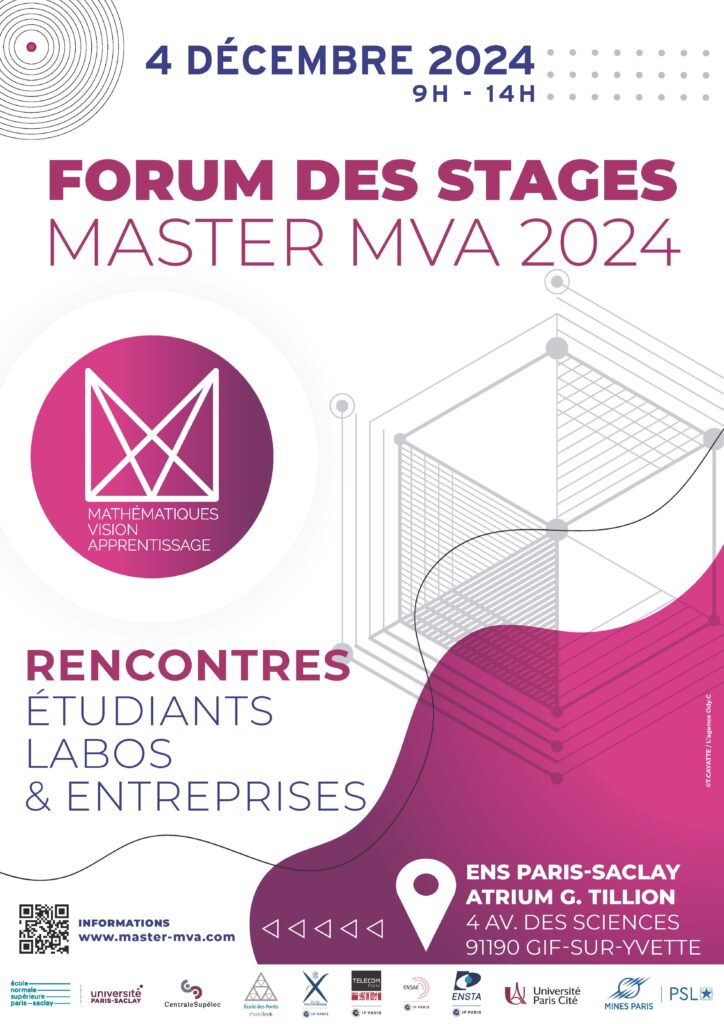Prè-requis
Elementary probability, Fourier, differential calculus
Deep learning will be introduced from scratch
Objectif du cours
1-Explore the structure of images at « patch » level.
(Patches are small image extracts that are processed in computational neural networks and in recent image processing. The current dimension that start being well understood is about 8×8=64 to 60×60=3600)
2-Apply it to a fundamental problem requiring an understanding of this structure: image denoising
3-Compare image processing designed by humans to image processing learned by deep neural networks
Vidéo de présentation : here (consulter la présentation ci-dessous pour les horaires et les programmes mis à jour)
Présentation du cours : here
Organisation des séances
Each session will imply a combination of course, online experiments with IPOL
Where and when : ENS Paris-Saclay, see course calendar for the dates and classroom
End: first week of December (10 courses)
Mode de validation
1)Simple mathematical exercises on the subject of the course + experimental report on image processing experiments made on line (no programming will be required). Both delivered each week + exercices on Colab Notebooks
2) A final oral examination (or written if the number of students is too important)
Material provided
Lecture notes in English with exercises
online workshops at IPOL (image processing on line, www.ipol.im)
PLAN :
Image sampling and discrete Fourier transform
A fast tutorial on Gaussian vectors
Noise
Multiscale DCT Denoising
Image self-similarity and denoising
Bayesian patch-based methods
A crash course on deep learning (I and II)
A comparative study of deep and shallow CNNs denoisers
Comparison of all denoising methods
Thèmes abordés
This course addresses one of the fundamental problems of signal and image processing, the separation of noise and signal. This was already the key problem of Shannon’s foundational Mathematical Theory of Communication.
Ever since, this problem is recurring and has uncountable applications for image formation, image and video post-production, and feature detection. Since the 70s, several denoising approaches have been identified and can be grouped in a handful of useful ‘denoising principles’ with notable progress.
Yet, in 2016, neural denoisers have started outperforming (slightly) human made denoising algorithms. Their principles are quite different. Human algorithms adopt mathematical principles to denoise and stick by them. Neural algorithms are fully pragmatic and learn jointly noise and image structure from large collections of images. The inner workings of these learned denoising networks are not yet fully understood.
This course organized by three image processing specialists and deep learning practitioners stands at this crucial crossroad. We will explain the classical theories, the neural devices and demonstrate what perspectives and cross-fertilization this comparison yields. Both theories process image patches.
The course will be designed to understand in depth patch structure and the structure of the global ensemble of patches.
Gabriele Facciolo
ENS Paris-Saclay
Jean-Michel Morel
ENS Paris-Saclay
Pablo Arias
Universitat Pompeu Fabra
